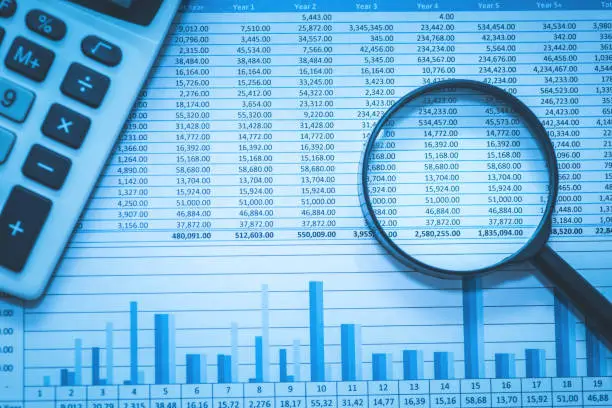Learn about some of the long term investments you can choose as a starter employee and use them to build your wealth gradually.
Building Your Nest Egg: Top Long-Term Investments for New Employees
Congratulations on your new job! As you embark on this exciting chapter, financial planning becomes increasingly important. While that first paycheck might feel like burning a hole in your pocket, taking some thoughtful steps towards long-term investments can set you on the path to financial security.
This article dives into the world of long-term investments, specifically tailored for new employees. We'll explore various options, their pros and cons, and how to navigate this exciting yet sometimes daunting world of building wealth.
Why Long-Term Investments?
The power of compound interest is often referred to as the "eighth wonder of the world" by Albert Einstein. Simply put, it's the interest earned on your interest. The earlier you start investing, the more time your money has to grow exponentially through compounding. Even small, regular contributions over a long period can translate into a significant sum down the road.
Long-term investments, typically with a time horizon of 10 years or more, aim to weather market fluctuations and generate steady returns. This allows you to:
- Achieve Long-Term Goals: Retirement, a down payment on a house, or funding your child's education – long-term investments can help you achieve these goals.
- Build Financial Security: Having a diversified investment portfolio provides a safety net and allows you to face unforeseen circumstances with greater financial stability.
- Develop Financial Discipline: Regular contributions to investments instill a sense of discipline and responsible financial management.
Understanding Your Risk Tolerance
Before diving into specific investments, it's crucial to understand your risk tolerance. This refers to your comfort level with potential losses. Generally, younger investors have a longer time horizon and can tolerate higher risk for potentially higher returns. However, it's essential to find a balance that aligns with your own risk appetite.
Here's a breakdown of different risk profiles:
- Conservative: You prioritize security and are comfortable with lower potential returns. Investments like bonds or savings accounts may suit you.
- Moderate: You're open to some risk for potentially higher returns. A mix of stocks, bonds, and ETFs (Exchange Traded Funds) might be a good fit.
- Aggressive: You have a high tolerance for risk and prioritize maximizing returns. Stocks with high growth potential might be your choice, but understand the potential for significant losses as well.
Top Long-Term Investments for New Employees
Now that you grasp the importance of long-term investing and your risk tolerance, let's explore some of the best options for new employees:
1. Employer-Sponsored Retirement Plans:
- 401(k) or 403(b): Many employers offer these retirement savings plans with a significant benefit – employer matching contributions. This essentially means free money! Take advantage of this by contributing at least enough to get the full match. These plans also offer tax benefits, allowing your contributions to grow tax-deferred until withdrawal in retirement.
2. Individual Retirement Accounts (IRAs):
- Traditional IRA: Similar to employer-sponsored plans, contributions to traditional IRAs are tax-deductible, and earnings grow tax-deferred. However, there are income limitations for full deductibility.
- Roth IRA: Contributions to Roth IRAs are made with after-tax dollars, but qualified withdrawals in retirement are tax-free. This can be a great option for younger investors who expect to be in a higher tax bracket later in life.
3. Index Funds and Exchange Traded Funds (ETFs):
- These passively managed funds track a specific market index, providing instant diversification across a basket of stocks or bonds. They offer low fees, making them cost-effective for new investors.
- ETFs trade like stocks, offering greater flexibility compared to mutual funds, which typically have a daily trading price update.
4. Robo-Advisors:
- These automated investment platforms use algorithms to create and manage a diversified portfolio based on your risk tolerance and financial goals. They offer a low-cost way to enter the investment world, especially for those starting with smaller amounts.
5. High-Yield Savings Accounts:
- While not technically an investment, high-yield savings accounts offer a safe place to park your emergency fund and some of your short-term savings. They typically offer higher interest rates compared to traditional savings accounts.
Additional Considerations:
Building a solid foundation for your long-term financial future requires careful planning and a nuanced understanding of various investment options. While the previous section explored some of the top investment choices for new employees, several additional factors warrant consideration before diving in.
Investment Time Horizon:
As mentioned before, your investment time horizon significantly impacts your risk tolerance and overall strategy. Here's a breakdown of how time horizon influences your choices:
- Short-Term (1-3 Years): Prioritize safety and liquidity. Opt for high-yield savings accounts, short-term bond funds, or money market accounts.
- Medium-Term (3-7 Years): Balance risk and reward. Consider a mix of stocks, bonds, and ETFs, with a higher allocation towards bonds as you get closer to your goal.
- Long-Term (10+ Years): Maximize growth potential. Allocate a larger portion to stocks and ETFs, but maintain diversification to manage risk.
Investment Fees:
Investment fees can significantly eat into your returns over time. Here are some common fees to be aware of:
- Management Fees: These fees are charged by actively managed mutual funds and robo-advisors to cover management costs. Index funds and ETFs typically have lower fees.
- Expense Ratios: This is an annual percentage cost that covers a fund's operational expenses. Lower expense ratios are generally preferred.
- Transaction Fees: Some platforms charge fees for buying and selling investments. Be mindful of these, especially if you plan to trade frequently.
Dollar-Cost Averaging (DCA):
DCA is an investment strategy that involves investing a fixed amount of money at regular intervals, regardless of the asset's price. This approach helps average out the cost per share over time, mitigating the impact of market fluctuations. It's a particularly beneficial strategy for long-term investors as it instills discipline and reduces the risk of investing a lump sum at the wrong time.
Tax Implications:
Understanding how taxes impact your investments is crucial. Consider:
- Tax-advantaged Accounts: Utilize tax-advantaged retirement plans like 401(k)s, IRAs, or Roth IRAs to maximize tax benefits. Contributions to traditional accounts may be tax-deductible, and earnings grow tax-deferred until withdrawal. Roth contributions are made with after-tax dollars, but qualified withdrawals in retirement are tax-free.
- Capital Gains Taxes: Taxes are levied on profits from selling investments held for more than a year. The tax rate depends on your income bracket and whether the investment is classified as a short-term or long-term capital gain.
- Taxable Dividends: Some companies distribute a portion of their profits to shareholders as dividends. These dividends may be subject to taxes depending on the account they are held in.
Rebalancing Your Portfolio:
Over time, the market performance of different asset classes can cause your portfolio to deviate from your target asset allocation. Rebalancing involves buying or selling assets to restore your desired mix of investments. This helps maintain your risk tolerance and ensures your portfolio stays on track to meet your long-term goals. Consider rebalancing at least once a year or whenever your asset allocation deviates significantly from your target.
Responsible Investing (RI):
Many new investors are increasingly interested in aligning their investments with their values. Responsible Investing (RI) considers environmental, social, and governance (ESG) factors when making investment decisions. This can involve focusing on companies with strong sustainability practices, social responsibility initiatives, and ethical governance. While RI funds might have slightly lower average returns, they offer the satisfaction of investing in companies that contribute positively to society and the environment.
Seeking Professional Advice:
While the information provided here offers a valuable starting point, navigating the investment landscape can be complex. Consider seeking professional financial advice, especially if you have a complex financial situation or significant investment goals. A qualified financial advisor can help you develop a personalized investment plan that aligns with your risk tolerance, time horizon, and financial objectives.
Continuous Learning:
The world of finance is constantly evolving. Make it a habit to stay informed by reading financial news, attending investing workshops, or listening to investing podcasts. The more you learn, the more confident you'll be in making informed investment decisions.
The Importance of Patience:
Building long-term wealth takes time and discipline. Don't expect to get rich quick. Stick to your investment plan, avoid emotional investing decisions based on market volatility, and focus on the long-term growth potential of your investments.
The Power of Automation:
Many investment platforms offer automated investing tools. Consider setting up automatic contributions to your investment accounts. This removes the temptation to delay investing and ensures consistent contributions towards your financial goals.
Emergency Fund:
An emergency fund is a readily accessible pool of savings set aside to cover unexpected expenses. It acts as a financial safety net, protecting you from dipping into your investments or accumulating high-interest debt during unforeseen circumstances.
Here's why building an emergency fund is crucial before diving heavily into long-term investments:
- Peace of Mind: Unexpected events like medical bills, car repairs, or job loss can be financially stressful. Having an emergency fund provides peace of mind, knowing you have a buffer to handle these situations without derailing your long-term financial goals.
- Protects Your Investments: If faced with a financial emergency, you might be tempted to tap into your long-term investments to cover immediate needs. This can disrupt your investment strategy and potentially lock in losses if you're forced to sell during a market downturn. An emergency fund allows you to address urgent needs without jeopardizing your long-term financial plans.
- Reduces Reliance on Debt: Without an emergency fund, unexpected expenses can force you to rely on credit cards or high-interest loans. This can trap you in a cycle of debt, making it difficult to save and invest for the future.
How Much Should You Save?
Financial experts generally recommend saving 3-6 months' worth of living expenses in your emergency fund. This amount can vary depending on your individual circumstances. Here are some factors to consider:
- Living Expenses: Calculate your monthly essential expenses like rent/mortgage, utilities, groceries, transportation, and minimum debt payments.
- Dependents: If you have dependents, factor in their essential needs when calculating your emergency fund amount.
- Job Security: Those with a more stable job might feel comfortable with a smaller emergency fund compared to someone in a less secure job market.
Where to Save Your Emergency Fund:
Choose a savings account with high liquidity and easy access to your funds. Here are some options:
- High-Yield Savings Account: These accounts offer higher interest rates than traditional savings accounts, allowing your emergency fund to grow slightly while remaining accessible.
- Money Market Account: Similar to high-yield savings accounts, money market accounts offer a bit more flexibility with features like check-writing capabilities. However, there might be limitations on the number of withdrawals allowed per month.
Building Your Emergency Fund:
Here are some tips to help you build your emergency fund:
- Set a Savings Goal: Determine a target amount for your emergency fund based on your living expenses and comfort level.
- Automate Savings: Set up automatic transfers from your checking account to your emergency savings account. This ensures consistent contributions and removes the temptation to spend that money.
- Review Regularly: As your financial situation evolves, revisit your emergency fund goals and adjust your savings plan accordingly.
Conclusion
Remember, building an emergency fund is a marathon, not a sprint. Start with small, achievable goals and gradually increase your contributions as your financial situation allows. Once you've established a healthy emergency fund, you can confidently focus on long-term investments with greater peace of mind.


























